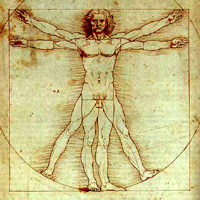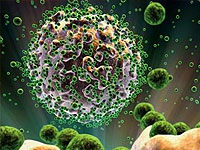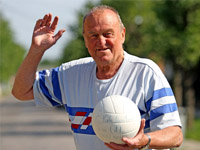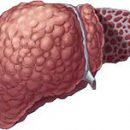In the body to change the weather, they react like antenna, special receptors located on the walls of the carotid artery. In addition, atmospheric pressure changes and magnetic storms have great influence on human well-being.
Content
Concept of biorhythms
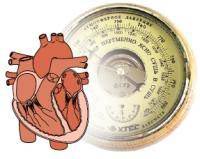 Currently, the study of the meteopathy is engaged in a whole science - biometeorology. It was found that the basis of the occurrence of meteo-dependence is a violation of the biological rhythms of a living organism.
Currently, the study of the meteopathy is engaged in a whole science - biometeorology. It was found that the basis of the occurrence of meteo-dependence is a violation of the biological rhythms of a living organism.
Biological rhythms are periodically repeated changes in the nature, intensity of all biophysical, biochemical processes, starting from the level of one cell and ending with the body as a whole. All biorhythms can be divided into several types.
The cycle of high-frequency, or ultrafined (Ultra - over, Dies - day), biorhythms range from several colors to 20 hours. A high-frequency view of biorhythms includes bioelectric activity of the heart (recorded using an electrocardiogram), brain, muscles, nerves (can be fixed with electroencephalogram, electroneuromiography), cycles «Sleep - wakefulness», alternation of periods of activity and relative rest in newborns.
Medium-grade, or near-dry, circadian (CIRCA - about, around), biorhythms are characterized by cycles at 20-28 hours. These include daily vibrations of hormonal level, body temperature, blood pressure, heart rate, urine release, drug sensitivity. These are the most vulnerable and sensitive to external influences of the biorhythm, usually a failure of these cycles is based on a meteopathy.
At low-frequency, or infradian (infra - less, under), the biorhythms of the cycle repeated less often once a day. These are near-week biorhythms (for example, a change in performance during the week - it is higher in the middle of the week, and the lowest on Monday and Friday); indocent - for example, menstrual cycle in women; seasonal (changes in metabolic processes, immunity and morbidity, fertility, depending on the time of year); Okrug-solid - fluctuations in the growth intensity and development of children of the first year of life (in the first half of the years, the growth of babies, as a rule, more intense than by the end of the year), decline in vitality and immunity on the eve and within a month after the next birthday. The longest of low-frequency cycles is a human life (birth, childhood, teenage period, youth, maturity, elderly age, old age, death).
The most clearly defined cycles, which, one way or another, correspond to the cycles of nature - the day, the lunar month, year, and T.D.
Meeting mechanisms for meteo-dependence
The central regulator of all life cycles is the brain department - hypothalamus and brain appendages located near the hypothalamus - epiphysis and pituitary. Receiving numerous signals with «Peripherals», From all other organs, these brain structures regulate the activity of all life processes in the human body, set up «Domestic hours» each of us. A sharp change of climate and time zones - for example, during distant flights - can cause a total biorhythm failure and the development of total desinchronosis - temporary violation of biorhythms. With total desynchronomy, almost all the functions of the body are disturbed; A person feels the decline of strength, the fatigue is increased, the sleep is worse, attention, the appetite is reduced, performance, blood pressure indicators, pulse frequency, breathing. With a change in meteorological conditions (with any weather whims, geomagnetic storms, increase solar activity, seasonal restructuring) The body works more often on the principle «Where is thin, there and breaks», Causeing people who are predisposed to the meteopathy. It is characterized by vibration of blood pressure and pulse frequency, insomnia with violation of the alternation of normal phases of sleep, exacerbation of chronic gastritis, colitis, ulcerative disease of the stomach or duodenum, deterioration of other chronic diseases.
Most often suffer from nearby cyclic processes. Women are more prone to meteo-sensitivity than men, and residents of megacities - compared with the inhabitants of the countryside.



